Why is the E!^Race^Serer once a Language's Persons Room,
is that clause a bank akin to the continent cent,
should a penny make a counter and the dime add a 10 sent,
will the chaos grumble ore,
does it Tribe to a Posed??
Draw in Hi row cliff's notes that said this store,
the scene is an odd a see how does your mind say lets!!!!
Hymn uh Lay Yens,
history UN told to stool Conversation as Religions off Ten spet,
wise is the ocean on the bridge to shipping views of kept,
Wares of the Internet will Envelope this bet.
Traveler's of the Moon's at Valley of the Sun's,
is magnitude the added boom to say decision get,
is memory a line upon the hare it edge of fined,
on coarse this is a bit piece slow to gain the cricket Keys??
Serer people
From Wikipedia, the free encyclopedia
http://www.unexplained-mysteries.com/forum/topic/233044-the-serer-west-africa-and-ancient-egyptians/http://www.linkapedia-anthropology.com/digest/the-serer-west-africa-and-ancient-egyptians-ancient-mysteries/22661923/8ac81df2d8f55a45c986cb0e75cd6fca
 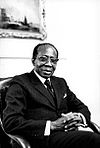
| |
| Total population | |
|---|---|
| (Over 1.8 million[1]) | |
| Regions with significant populations | |
|
| |
| Languages | |
| Serer proper, Cangin languages, Wolof French (Senegal and Mauritania), English (Gambia), | |
| Religion | |
| Majority Islam,[2] Christianity[3] and Serer religion (a ƭat Roog) | |
| Related ethnic groups | |
| Wolof people, Toucouleur people and Lebou people |
The Serer people (also spelt "Sérère", "Sereer", "Serere", "Seereer" and sometimes wrongly "Serre") are a West Africanethnoreligious group.[4] In modern-day Senegal, the Serer people live in the west-central part of the country, running from the southern edge of Dakar to the Gambian border. The Serer (also known as "Seex" or "Sine-Sine") occupy the Sine and Saloum areas (now part of modern-day independent Senegal). In the Gambia, they occupy parts of old "Nuimi" and "Baddibu" as well as the Gambian "Kombo". The Serer-Noon occupy the ancient area of Thiès in modern-day Senegal. The Serer-Ndut are found in southernCayor and north west of ancient Thiès. The Serer-Njeghen occupy old Baol; the Serer-Palor occupies the west central, west southwest of Thiès and the Serer-Laalaa occupy west central, north of Thiès and the Tambacounda area.[5][6]
The Serer people are the third largest ethnic group in Senegal making up 14.7% of the Senegalese population.[7] In Gambia they make up less than 2% of the population.[8] Along with Senegal and the Gambia, they are also found in small numbers in southern Mauritania. Some notable Gambian Serers include Isatou Njie-Saidy, Vice President of the Gambia since 20 March 1997, and the late Senegambian historian, politician and advocate for Gambia's independence during the colonial era – Alhaji Alieu Ebrima Cham Joof. In Senegal they include Léopold Sédar Senghor and Abdou Diouf (first and second president of Senegal respectively).
Contents
[hide]Serer peoples[edit]
The Serer people include the Seex (Serer or Serer-Sine), Serer-Noon (sometimes spelt "Serer-None", "Serer-Non" or just Noon), Serer-Ndut (also spelt "N’doute"), Serer-Njeghene (sometimes spelt "Serer-Dyegueme" or "Serer-Gyegem" or "Serer-N'Diéghem"), Serer-Safene, Serer-Niominka, Serer-Palor (also known as "Falor", "Palar", "Siili", "Siili-Mantine", "Siili-Siili", "Waro" or just "Serer"), and the Serer-Laalaa (sometimes known as "Laa", "La" or "Lâ" or just "Serer"). Each group speaks Serer or a Cangin language. "Serer" is the standard English spelling. "Seereer" or "Sereer" reflects the Serer pronunciation of the name and are mostly used by Senegalese Serer historians or scholars.
Ethnonym[edit]
The meaning of the word "Serer" is uncertain. Issa Laye Thiaw[not in citation given] views it as possibly pre-Islamic and suggests four possible derivations:[9]
1. From the Serer Wolof word reer meaning 'misplaced', i.e. doubting the truth of Islam.
2. From the Serer Wolof expression seer reer meaning "to find something hidden or lost."
3. From "the Arabic word seereer meaning sahir magician or one who practices magic (An allusion to the traditional religion)".
4. From a Pulaar word: meaning separation, divorce, or break, again referring to refusing Islam.
2. From the Serer Wolof expression seer reer meaning "to find something hidden or lost."
3. From "the Arabic word seereer meaning sahir magician or one who practices magic (An allusion to the traditional religion)".
4. From a Pulaar word: meaning separation, divorce, or break, again referring to refusing Islam.
Professor Cheikh Anta Diop citing the work of the 19th century French archeologist and egyptologist - Paul Pierret believes that the word serer means "he who traces the temple."[10] Diop went on to write: "That would be consistent with their present religious position: they are one of the rare Senegalese populations who still reject Islam. Their route is marked by the upright stones found at about the same latitude from Ethiopia all the way to the Sine-Salum, their present habitat."[10]
History of the Serer people[edit]
Medieval era to present[edit]
Main article: Serer history (medieval era to present)
Professor Dennis Galvan writes that "The oral historical record, written accounts by early Arab and European explorers, and physical anthropological evidence suggest that the various Serer peoples migrated south from the Fuuta Tooro region (Senegal River valley) beginning around the eleventh century, when Islam first came across the Sahara."[11]:p.51 Over generations these people, possibly Pulaar speaking herders originally, migrated through Wolof areas and entered the Siin and Saluum river valleys. This lengthy period of Wolof-Serer contact has left us unsure of the origins of shared "terminology, institutions, political structures, and practices."[11]:p.52
Professor Étienne Van de Walle gave a slightly later date, writing that "The formation of the Sereer ethnicity goes back to the thirteenth century, when a group came from the Senegal River valley in the north fleeing Islam, and near Niakhar met another group of Mandinka origin, called the Gelwar, who were coming from the southeast (Gravrand 1983). The actual Sereer ethnic group is a mixture of the two groups, and this may explain their complex bilinear kinship system".[12]
Serer people’s medieval history is partly characterised by resisting Islamization and later Wolofization from possibly the 11th century during the Almoravid movement (particularly the Serers of Takrur)[13] to the 19th century Marabout movement of Senegambia.[14] Although the old Serer paternal dynasties continued, the Wagadou maternal dynasty was replaced by the Guelowar maternal dynasty in the 14th century.[15] After the Ghana Empire was sacked as certain kingdoms gained their independence, Abu-Bakr Ibn-Umar, leader of the Almoravids launched a jihad into the region.[dubious ] According to Serer oral history in November 1087 a Serer bowman named Amar Godomat shot and killed Abu-Bakr Ibn-Umar with an arrow.[16][17][18][19]
The last Serer kings[edit]
The last kings of Sine and Saloum were Maad a Sinig Mahecor Joof (also spelt : Mahecor Diouf) and Maad Saloum Fode N'Gouye Joof (also spelt : Fodé N’Gouye Diouf or Fode Ngui Joof) respectively. They both died in 1969. After their deaths, the Serer Kingdoms of Sine and Saloum were incorporated into independent Senegal which gained its independence from France in 1960. The Serer kingdoms of Sine and Saloum are two of few pre-colonial African Kingdoms whose royal dynasty survived up to the 20th century.[20]
The Serer kingdoms[edit]
Serer kingdoms included the Kingdom of Sine and the Kingdom of Saloum. In addition to these twin Serer kingdoms, the Serers also ruled in theWolof kingdoms such as Jolof, Waalo, Cayor and Baol. The Kingdom of Baol was originally an old Serer Kingdom ruled by the Serer paternal dynasties such as Joof family, the Njie family, etc. and the Wagadou maternal dynasty prior to the Battle of Danki in 1549.[21][22] The Faal (var: Fall) paternal dynasty of Cayor and Baol that ruled after 1549 following the Battle of Danki were originally Black Moors (Naari Kajoor).[23][24] Prior to the Faal dynasty of Cayor and Baol, these two kingdoms were ruled by the Serer people with the patrilineages "Joof" or Diouf, Faye and Njie, and the maternal lineage of Wagadou – members of the royal families from the Ghana Empire (proper "Wagadou Empire") who married into the Serer aristocracy.[21][22][25]
Social organization[edit]
The Serer Kings and land owners (Maad, Maad a Sinig, Maad Saloum or Lamane or even Barr, Bour or Bur, as used by some mainly non-Serers when referring to Serer kings) were at the top of the social strata. The terms "Buur Sine" and "Buur Saloum" (King of Sine and King of Saloum respectively) are Wolof terms when referring to Serer Kings. "Buur" or "Bur" are not Serer terms but Wolof terms.[26] When Serers refer to their kings they say Maad, Mad or sometimes Maat. The Serer kings divided their capacity as follows (not in order of importance): the King of Sine Maad a Sinig or Maad Saloum appointed the chiefs of provinces named "Lamane", of "Serer" or "Guelowar" origin (pre 1335Lamanes were not mere province Chiefs but kings, also the Guelowars became Serers and had Serer surnames).[27] The central government is appointed which included the lingeer (queen usually the king's mother or sister), the Farba Kaba (chief of the army) and the Great Jaraff (head of the noble council responsible for electing the kings from the ruling family). Other notable titles included the Buumi or Bumi (of Serer origin meaning inheritor). The word (Bumi) is also found in Wolof, but it is Serer in origin.[28] They were members of the Royal Family and were eligible to succeed after the death of Kings. The "Buur Kevel" or "Buur Geweel" (the Head Griot of the King). This person was also a rather important figure in the Royal Court as well as in wars. Not only did he kept the history and genealogy of the royal dynasty, he was also the advisor to the King. The "Buur Kevel(s)" or "Buur Geweel(s)" were very wealthy and powerful. They had the power to destroy a royal dynasty if they chose to do so. Their other role included accompanying kings to battles; advising kings when and how to launch a war against another kingdom; what the King should eat; how to walk; what to wear; whom to give audience to; whom to employ and whom to sack etc.[29]
All the kings that ruled Serer Kingdoms had Serer surnames, with the exception of the Mboge and Faal paternal dynasties whose reigns are very recent and they did not provide many kings.[30]
Population[edit]
The Serer people are diverse and though they spread throughout the Senegambia region, they are more numerous in places like old Baol,Sine, Saloum and in the Gambia, which was a colony of the Kingdom of Saloum.
Serer languages[edit]
Main articles: Serer language and Cangin languages
Most people who identify themselves as Serer speak the Serer language. This is spoken in Sine-Saloum, Kaolack, Diourbel, Dakar, and inGambia, and is part of the national curriculum of Senegal. Historically the Serer people’s unwillingness to trade directly during the colonial era was a double edged sword to the Serer language as well as the Cangin languages. That resulted in the Wolof language being the dominant language in the market place as well as the factories.[33] However, the Serer language among with other local languages are now part of the national curriculum of Senegal.
About 200,000 Serer speak various Cangin languages, such as Ndut and Saafi, which are not closely related to Serer proper (Serer-Sine language). There are clear lexical similarities among the Cangin languages. However, they are more closely related to other languages than to Serer, and vice versa.[34] For comparison in the table below, 85% is approximately the dividing line between dialects and different languages.
| Cangin languages and Serer proper | % Similarity with Serer-Sine | % Similarity with Noon | % Similarity with Saafi | % Similarity with Ndut | % Similarity with Palor | % Similarity with Lehar (Laalaa ) | Areas they are predominantly found | Estimated population |
|---|---|---|---|---|---|---|---|---|
| Lehar language(Laalaa) | 22 | 84 | 74 | 68 | 68 | N/A | West central, north of Thies, Pambal area, Mbaraglov, Dougnan;Tambacounda area. Also found in the Gambia | 12,000 (Senegal figures only (2007) |
| Ndut language | 22 | 68 | 68 | N/A | 84 | 68 | West central, northwest of Thiès | 38,600 (Senegal figures only (2007) |
| Noon language | 22 | N/A | 74 | 68 | 68 | 84 | Thiès area. | 32,900 (Senegal figures only (2007) |
| Palor language | 22 | 68 | 74 | 84 | N/A | 68 | West central, west southwest of Thiès | 10,700 (Senegal figures only (2007) |
| Saafi language | 22 | 74 | N/A | 68 | 74 | 74 | Triangle southwest of and near Thiès (between Diamniadio, Popenguine, and Thiès) | 114,000 (Senegal figures only (2007) |
| Serer-Sine language (not a Cangin language) | N/A | 22 | 22 | 22 | 22 | 22 | West central; Sine and Saloum River valleys. Also in the Gambia and small number in Mauritania | 1,154,760 (Senegal - 2006 figures); 31,900 (the Gambia - 2006 figures) and 3,500 (Mauritania 2006 figures)[35] |
Serer culture[edit]
The Serer's favourite food is called Chere (or chereh) in the Serer language - (pounded coos). They control all the phases of this dish from production to preparation. Other ethnic groups (or Serers), tend to buy it from Serer women market traders or contract it out to them especially if they are holding major ceremonial events. Chere is very versatile and can be eaten with fermented milk or cream and sugar as a breakfast cereal or prepared just as a standard couscous. The Serer traditional attire is called Serr. It is normally woven by Serer men and believed to bring good luck among those who wear it. Marriages are usually arranged. In the event of the death of an elder, the sacred "Gamba" (a big calabash with a small hollow-out) is beaten followed by the usual funeral regalia to send them off to the next life.[36]
Wrestling and Sports[edit]
Senegalese wrestling called "Laamb" or Njom in Serer originated from the Serer Kingdom of Sine.[37] It was a preparatory exercise for war among the warrior classes. That style of wrestling (a brutal and violent form) is totally different from the sport wrestling enjoyed by all Senegambian ethnic groups today, nevertheless the ancient rituals are still visible in the sport version. Among the Serers, wrestling is classified into different techniques and each technique takes several years to master. Children start young trying to master the basics before moving on to the more advance techniques like the "mbapatte", which is one of the oldest tehniques and totally different from modern wrestling. Yékini(real name: "Yakhya Diop"), who is a professional wrestler in Senegal is one of the top wrestlers proficient in the "mbapatte" technique. Lamba and sabar (musical instruments) are used as music accompaniments in wrestling matches as well as in circumcisiondances and royal festivals.[38] Serer wrestling crosses ethnic boundaries and is a favourite pastime for Senegalese and Gambians alike.
Music[edit]
"The Serer people are known especially for their rich knowledge of vocal and rhythmic practices that infuse their everyday language with complex overlapping cadences and their ritual with intense collaborative layerings of voice and rhythm."
The Sabar (drum) tradition associated with the Wolof people originated from the Serer Kingdom of Sine and spread to the Kingdom of Saloum. The Wolof people who migrated to Serer Saloum picked it up from there and spread it to Wolof Kingdoms.[40] Each motif has a purpose and is used for different occasions. Individual motifs represent the history and genealogy of a particular family and are used during weddings, naming ceremonies, funerals etc.
The Njuup (progenitor of Mbalax) and Tassu traditions (also Tassou) (progenitor ofrap music) both originated from the Serer people.[41] The Tassu was used when chanting ancient religious verses. The people would sing then interweave it with a Tassu. The late Serer Diva Yandé Codou Sène who was the griot of the late and former president of Senegal (Leopold Sedar Senghor) was proficient in the "Tassu". She was the best Tassukat (one who Tassu) of her generation. Originally religious in nature, the griots of Senegambia regardless of ethnic group or religion picked it up from Serer religious practices and still use it in different occasions e.g. marriages, naming ceremonies or when they are just singing the praises of their patrons. Most Senegalese and Gambian artists use it in their songs even the younger generation like "Baay Bia". The Senegalese music legend Youssou N'Dour who is also a Serer, uses "Tassu" in many of his songs.[39]
Occupation[edit]
The Serers practice trade, agriculture, fishing, boat building and animal husbandry. Traditionally the Serer people have been farmers and land owners.[42] Although they practice animal husbandry, they are generally less known for that, as in the past, Serer nobles entrusted their herds to thepastoralist Fulas, even today.[43] However, they are known for their mixed-farming.[44] Trade is also a recent phenomenon among some Serers. For the Serers, the soil (where their ancestors lay in rest) is very important to them and they guard it with jealousy. They have a legal framework governing every aspect of life even land law with strict guidelines. Apart from agriculture (and other forms of production or occupation such as animal husbandry, fishing especially among the Serer-Niominka, boat building, etc.), some occupations especially trade they viewed as vulgar, common and ignoble. Hence in the colonial era, especially among the Serer nobles, they would hire others to do the trading on their behalf (e.g. Moors) acting as their middle men.[45]
Serer relations to Moors[edit]
| The neutrality of this section is disputed. (January 2012) (Learn how and when to remove this template message) |
In the pre-colonial era, Moors from Mauritania who came to settle in the Serer kingdoms such as the Kingdom of Sine, etc., were ill treated by their Serer masters. If a Moor dies in a Serer kingdom, his body was dragged out of the country and left for the vultures to feast on if there is no family or friend to claim the body and bury it elsewhere. They were also never accompanied by grave goods. No matter how long a Mauritanian Moor has lived in the area as a migrant, he could never achieve high status within the Serer aristocracy. The best position he could ever wish for within Serer high society was to work as a Bissit (Bissik). Apart from spying for the Serer Kings, the Bissit's main job was to be a clown - for the sole entertainment of the Serer King, the Serer aristocracy and the common people. He was expected to dance in ceremonies before the king and liven up the king's mood and the king's subjects. This position was always given to the Moors. It was a humiliating job and not a title of honour. According to some, the history of this position goes back to an early Moor in Serer country who had a child by his own daughter.[46]
Joking relationship (Maasir or Kalir)[edit]
Serers and Toucouleurs are linked by a bond of "cousinage". This is a tradition common to many ethnic groups of West Africa known as Maasir (var : Massir) in Serer language(Joking relationship) or kal, which comes from kalir (a deformation of the Serer word kucarla meaning paternal lineage or paternal inheritance). This joking relationship enables one group to criticise another, but also obliges the other with mutual aid and respect. The Serers call this Maasir or Kalir. This is because the Serers and the Toucouleurs have the same ancestors.[47] The Serers also maintain the same bond with the Jola people with whom they have an ancient relationship.[48] In the Serer ethnic group, this same bond exists between the Serer patronym, for example between Joof and Faye.
Many Senegambian people also refer to this joking relations as "kal" (used between first cousins for example between the children of a paternal aunt and a maternal uncle) and"gamo" (used between tribes). "Kal" derives from the Serer word "Kalir" a deformation of "kurcala" which means paternal lineage or inheritance and is used exactly in that context by many Senegambians.[49] The word gamo derives from the old Serer word gamohu[50] - an ancient divination ceremony.[51][52]
Serer patronyms[edit]
See also: Joof family and Matrilineality of the Serer people
| Some of the common Serer surnames |
|---|
Religion[edit]
Main articles: Serer religion and Roog
Most[dubious ] Serers today are Muslim,[2] while others are Christian.[3] However, some Serers still follow traditional religious beliefs.[53][54]
The Serer religion, a ƭat Roog ('the way of the Divine') is the original religious beliefs, practices and teachings of the Serer people. The Serer people believe in a universal Supreme Deity called Roog (var : Rog). The Cangin language speakers refer to the supreme being as Koox. Serer religious beliefs encompasses ancient chants and poems; veneration and offerings to Serer gods, goddesses, the pangool (ancestral spirits and saints); astronomy; rites of passage; medicine; cosmology and the history of the Serer people.[55][56]


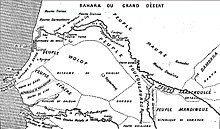

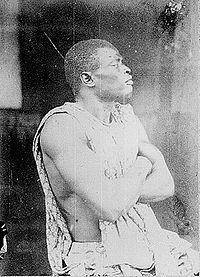
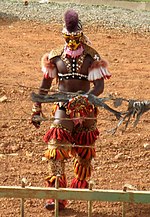
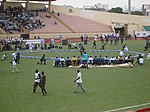

No comments:
Post a Comment